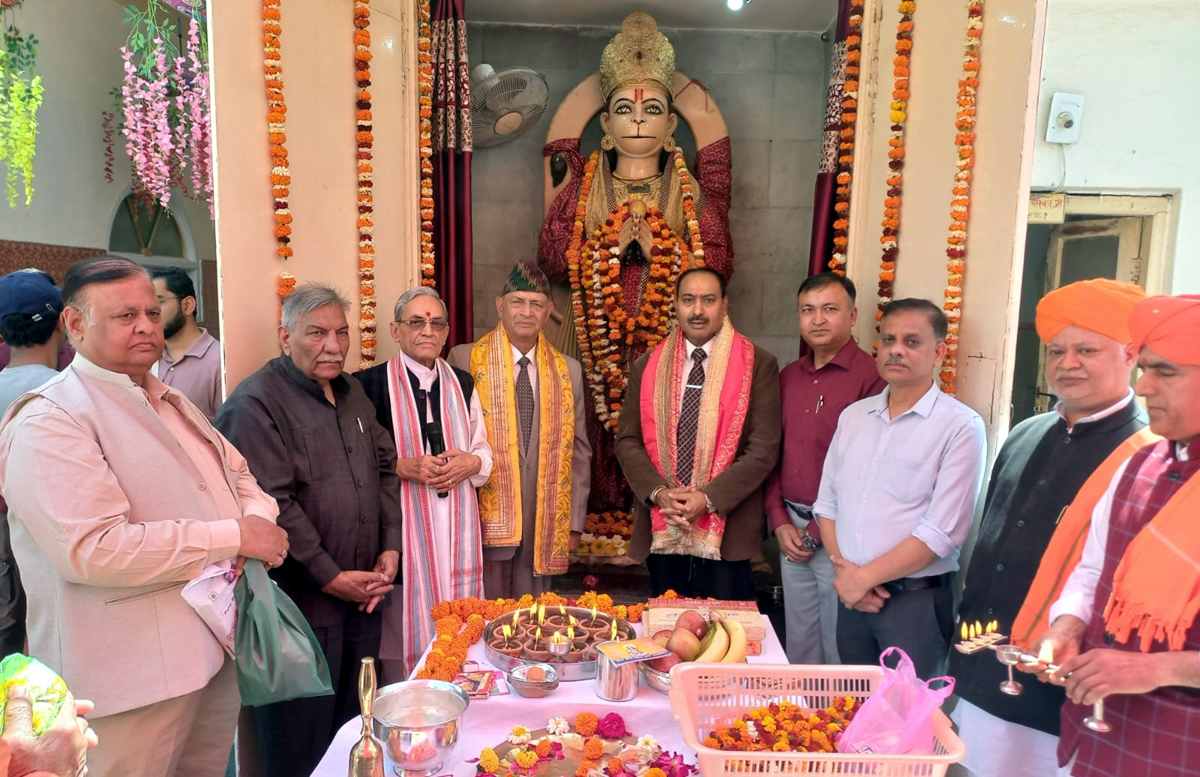
Excelsior Correspondent
JAMMU, Apr 6: President of J&K Dharmarth Trust Brigadier (Retired) RS Langeh today said that steps will be taken to uplift the temples and shrines falling under the ambit of the Trust to provide state of art facilities to the devotees visiting the religious spots in the Union Territory.
“People should come forward and support endeavours of the Trust in preserving the temples and shrines, and the rich cultural identity of Jammu and Kashmir. They should also inspire their offspring to be the part of religious affairs so that they remain connected with their roots”, he said during a programme organized to celebrate Hanuman Janmotsav at Raghunath ji Temple, Jammu.
On the occasion, Priests of Raghunath ji Temple recited Hanuman Chalisa and Sunderkand Path in a traditional manner. Hundreds of devotees participated in the programme. Students of the Architecture Department, Guru Gobind Singh Indraprastha University (GGSIU), Dwarka, also participated in the Programme.
Besides, President of the Trust, Ashok Kumar Sharma (secretary), Varinder Singh Jamwal (additional secretary) and members of Dharmarth Trust Council Padma Shri Vishwamurti Shastri, SM Sawhney and Vishal Abrol participated in the programme.
Interacting with GGSIU students, Brig RS Langeh briefed them about the history of Raghunathji Temple which was established by Maharaja Gulab Singh, the founder of erstwhile state of J&K. He also disseminated information about the functioning of Dharmarth Trust in looking after the affairs of temples and shrines of J&K.
Secretary of the Trust, in his address, briefed students about the religious importance of more than 12,25,000 Saligramas enshrined in the Temple premises. He also threw light on the significance of Karneshwar (Natraj ji) Temple constructed in the Raghunath ji Temple. He also informed them about Raghunath Temple Sanskrit Manuscript Library that preserves over 6,000 manuscripts in many Indian languages, with a notable collection of Sharda Script Sanskrit manuscripts, which are considered by the Sanskrit scholars as the rare books found across the globe.

